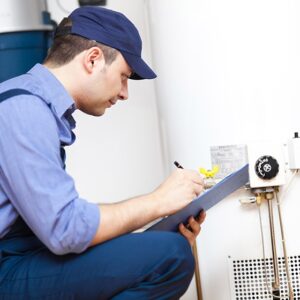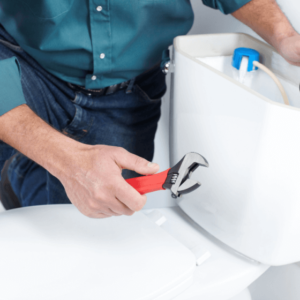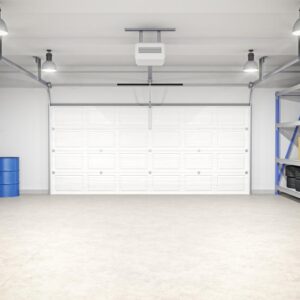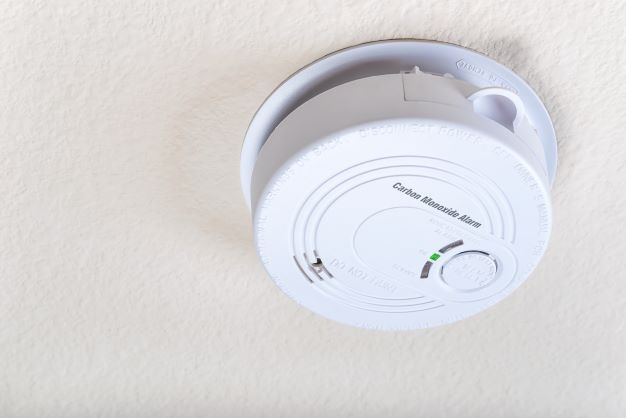You’ve learned about the importance of carbon monoxide detectors, and now you’re ready to buy one. Where is the best place to mount a carbon monoxide detector? Should a carbon monoxide detector be placed high or low? What happens if your carbon monoxide detector beeps? These are some of the several common questions that this blog will answer. Learn everything you need to know about having a carbon monoxide detector and maximizing its usefulness.
What Is Carbon Monoxide?
First, leave your home immediately if you suspect you’re being exposed to carbon monoxide. Either go straight to the emergency room or call the Poison Control Center at 1-800-222-1222. People often have flu-like symptoms from carbon monoxide exposure. However, they tend to go away when the person goes outside for fresh air. Since carbon monoxide can be deadly, it’s important to take it seriously.
Carbon monoxide is a gas that doesn’t have an odor or a color, which is why it’s so dangerous. It can come from gas stoves, lanterns, grills, small engines, and furnaces. Homes with gas appliances have more risks of CO exposure. If you use gas appliances or have a gas fireplace, follow the CDC’s safety guidelines.
Should I Worry if My Carbon Monoxide Detector Goes Off?
It’s always important to treat a sounding alarm like a serious threat. All people and pets should go outside immediately if the alarm goes off. Never stay inside and try to investigate it yourself. Call 911 to report the alarm going off, and wait outside until help arrives. If anyone is experiencing CO poisoning symptoms, emergency medical help is a must. Never assume it’s safe to go back inside until your home has been inspected.
What Should I Do if My CO Alarm Beeps?
If the carbon monoxide detector is beeping with loud and pulsating beeps instead of a full alarm, it means there’s a CO buildup. You should still go outside and treat it like a full alarm. In some cases, there can be a false alarm. The gas company may come to inspect the issue and find that there’s no leak. You’ll learn more about possible reasons for this in an upcoming section.
What Should I Do if My CO Alarm Chirps?
A chirping sound will annoy you until you do something about it. There can be two potential causes. You either need to replace the batteries or the alarm itself. Check the “replace by” date, and replace the unit if it has expired. Otherwise, replace the battery or batteries. Some alarms may chirp more often if they need to be replaced than if they need batteries. For example, an alarm may chirp five times per minute if it needs to be replaced. It may chirp once per minute if it needs new batteries.
What Are the Warning Signs of Carbon Monoxide Poisoning?
There are several possible signs of CO poisoning. You may have one, two, or more symptoms. These are common CO poisoning symptoms:
- Headache
- Confusion
- Dizziness
- Chest pain
- Weakness
- Stomach pain
- Nausea
- Vomiting
Eventually, a person can lose consciousness from significant CO exposure. This is another reason why it’s so dangerous.
Do Carbon Monoxide Detectors Go Off Randomly?
Yes, they can. However, you should always first treat an alarm like a real threat. There are several potential reasons an alarm may go off without a CO danger. For example, steam from frequent showers in a bathroom can put excess moisture in the air. If a CO detector is too close to the bathroom, it may go off. It may also be past its “replace by” date. Additionally, lead acid battery chargers can activate CO alarms. Be sure to have a professional rule out these and other possibilities.
Where’s the Best Place to Mount a Carbon Monoxide Detector?
Carbon monoxide detector placement is a critical safety factor. Knowing where to install a carbon monoxide detector is essential to maximize its usefulness. How many carbon monoxide detectors should be in a home? Building codes require each level of a home to have a CO detector.
In general, you’ll want one CO detector per floor of your home. For instance, a two-story home with a basement should have three. There should be one in the basement. Another should be on the main floor, and the upstairs alarm should be in the hall near the bedrooms. These alarms should be placed close to bedrooms or sleeping rooms.
How Close to a Bedroom Should I Put a Carbon Monoxide Detector?
Those rules in the previous section are only the minimum requirements. Safety experts encourage people to put an alarm inside every bedroom or sleeping room. If you don’t put one in every bedroom, place them no more than 15 feet from bedroom doors. It’s better to have them even closer if possible.
Should a Carbon Monoxide Detector Be Placed High or Low?
Many people wonder where to place a carbon monoxide detector on a wall. Does carbon monoxide rise or fall? There’s a common myth that CO weighs more than air. Because of that myth, some people believe that CO detectors belong close to the floor. However, the air is slightly heavier than CO, and the gas will evenly fill rooms. This means you can place detectors anywhere in a bedroom or hallway. Experts recommend putting them in the center of the room and about 15 feet from heat sources.
Where Should I Not Place a CO Detector?
Now that you know where to place carbon monoxide detectors, it helps to know where not to put them. Don’t put them in garages, bathrooms, or kitchens. You’re more likely to deal with false alarms. Also, don’t put them near fans or air vents.
How Do I Know if My CO Detector Works Correctly?
The rules for smoke and CO alarms differ. Experts recommend testing smoke alarms every month. Since CO can’t be seen or smelled like smoke, it’s important to check your alarms more often. Test the CO alarm every week by pressing the test button. If it’s not functioning properly, replace it. Change the batteries once every year if the alarm doesn’t have a 10-year battery that’s sealed. Also, change them sooner if the unit chirps. Even if the alarm appears to function correctly with weekly tests, don’t keep it past its “replace by” date.
Are There Different Types of Carbon Monoxide Detectors?
The three common types of carbon monoxide detectors are electrochemical, biomimetic, and metal oxide. Spend some time reading up on the different technologies and features to see which fits your needs. For example, if you want an alarm that’s highly sensitive, electrochemical is a good choice. If you want one that connects to your home’s electricity instead of using batteries, metal oxide is better. There are also smoke and carbon monoxide detector combo units.
Find Carbon Monoxide Detectors at True Value
If you’re buying your first carbon monoxide detector or you need a replacement, True Value has plenty of options. Now that you know how many CO detectors you need, head to your local True Value to find them.












